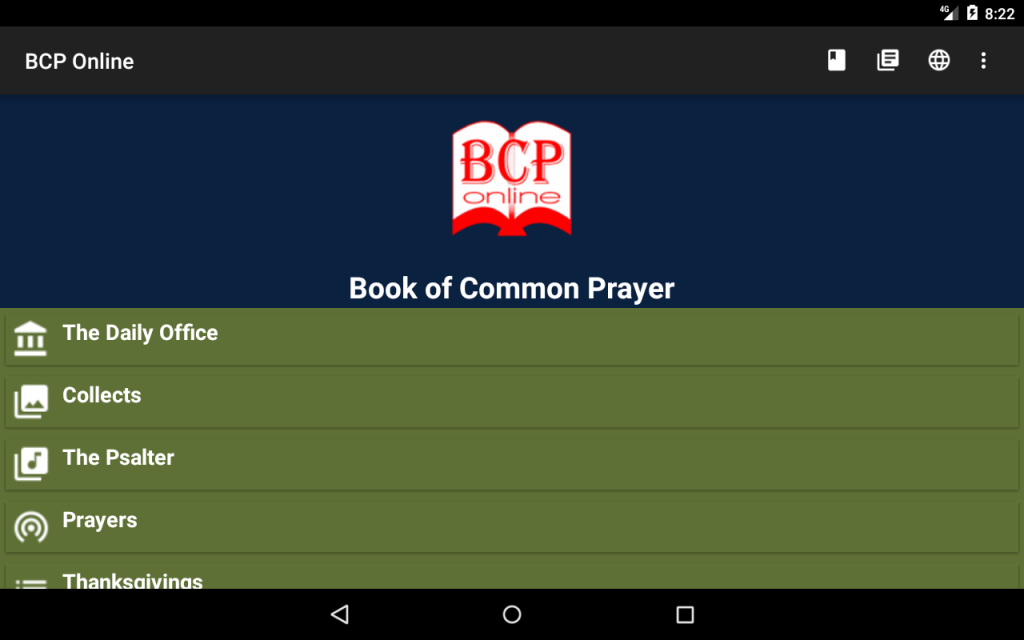
Continuing our conversation about the possibility of a new prayer book, longtime contributor George Clifford argues that we should ditch the “book” part of the BCP and go all digital
by George Clifford
The 1979 Book of Common Prayer badly needs revision:
- It is sexist, e.g., in its presumption that clergy and God are male;
- It is exclusionary, e.g., the marriage rite is only for heterosexual couples;
- It is limited, as evidenced by the proliferation and popularity of authorized alternative liturgies.
Others may add additional theological and liturgical reasons to that list.
Printing a revised Book of Common Prayer is inadvisable:
- Many small congregations already struggle financially. Their having to replace the 1979 Book of Common Prayer with a revised book will only compound pre-existing financial problems.
- Determining the contents of a new prayer book might prove impossible or even a catalyst for schism as individuals and groups fight over what to include in a volume that by its various nature is both limited (e.g., a 2000 page book would be unmanageable) and static.
- The pace of social change is accelerating. Creating another static volume would probably result in a volume that was dated and in need of revision before it was fully implemented across the denomination.
- One unmistakable direction of change is away from print toward electronic media. Some congregations have already effected this change. Instead of (or in addition to) a printed bulletin, they publish their bulletin electronically for access by people using smartphones and tablets.
- Juggling the prayer book, one or more of our authorized hymnals, a bulletin, and perhaps a bulletin insert with the scripture readings, can leave a visitor to our worship services feeling bewildered and out of place. Consequently, numerous congregations now print their entire liturgy in the bulletin. This tactic welcomes visitors – a critical tactic for a denomination both suffering from numerical decline and one in which a majority of our current growth comes from adults moving to the Episcopal Church from another denomination.
Moving from a printed Book of Common Prayer to only an electronic version clearly represents the best alternative to a printed prayer book:
- An electronic Book of Common Prayer can be user friendly, enabling easy preparation of electronic or printed bulletins as well as conveniently accessible daily offices in which the readings appear in situ after the user has selected her/his preferred version of the Bible. Furthermore, all of our authorized hymnals can be seamlessly integrated into an electronic prayer book, thus eliminating the need for printed hymnals in the pews because bulletins, whether printed or electronic, can include hymn texts with music. This shift would also facilitate updating music resources for our liturgies.
- An electronic prayer book is a “living” document. Establishment of a permanent process for authoritatively updating would help to ensure comprehensiveness and currency.
- Scattered congregations presently create their own liturgies, diverging from the basic precept that our common prayer unites us. Consistent use of authorized liturgies depends upon the priest-in-charge and not upon the medium used to publish our prayer book.
- An electronic prayer book avoids costly replacement of printed prayer books.
- An electronic prayer book with proper indexing and internal links can be easily accessible and expansively inclusive with no practical upper limit on its size.
- An electronic prayer book embraces technology and the indisputable direction of social change toward greater reliance upon electronic media.
Perhaps the two biggest obstacles to shifting to a revised, electronic prayer book are the institutional inertia common to most large, venerable institutions and our proclivity to cling to tradition regardless of its merit. Parishioners, even most of those who initially opposed printing the full liturgy in the bulletin, soon tell me that they enjoy the liturgy’s accessibility. However, they do not want to let go of having a printed prayer book. When I politely remark about the contradictory nature of these feelings, the most common response I receive is a shrug indicating the genuineness of their feelings, their awareness of the contradiction, and their reluctance to either stop printing the entire liturgy in the bulletin or to let go of the printer prayer book.
I predict that within five years of promulgating a revised, electronic version of the prayer book opposition to the idea will have largely given way to people asking “Why didn’t we do this sooner?”
George Clifford, a priest in the Diocese of Hawai’i, served as a Navy chaplain for twenty-four years, has taught ethics and the philosophy of religion, and now blogs at Ethical Musings.

